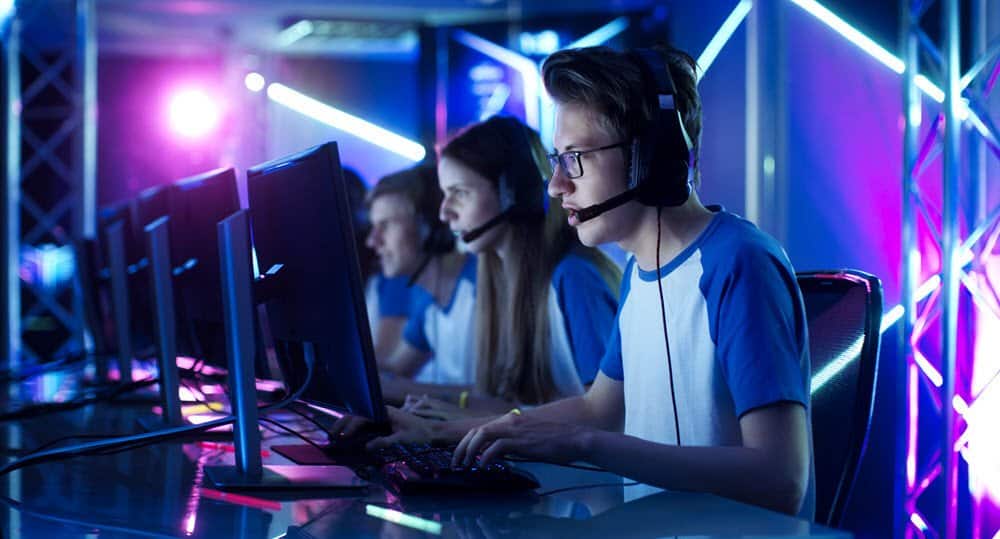By Ellie Gabel

Although most schools have integrated technology into many aspects of their institution, their standard equipment doesn’t typically meet the requirements to support an Esports program. To modernize and future-proof their endeavors, they must invest in quality equipment.
Will Standard Computer Labs Work?
Even though most schools have computer labs, many aren’t fit for gaming since they don’t contain quality hardware. Additionally, Esports are competitive, social events bringing together onlookers, coaches and multiple teams — the layout alone may not work since it has to accommodate so many people.
Most educational facilities must invest in more modern technology so their teams can genuinely compete. While only some have the funds to source the latest hardware on the market, many can still create a functional Esports program with alternatives. It’s feasible as long as they know how to choose the right internal components.
Technical Requirements of the Event Space
Schools must consider the technological demands of their event space, ensuring it can handle multiple machines running simultaneously. Power, lighting and temperature should be stable throughout a competition.
The space must remain cool even with many computers operating simultaneously. While they typically run at 167 degrees Fahrenheit, playing graphically-intense games for long sessions can make them reach nearly 180 degrees Fahrenheit. Either way, that much heat can quickly feel overwhelming in enclosed areas.
An air conditioning system may seem like an odd technical requirement, but it’s indispensable. Since students focus better when they feel comfortable, it’s as much about performance as safety. Even if they’re okay with competing using outdated technology, an adequately-equipped space is essential for the success of their Esports program.
Schools must also ensure their technology can accommodate crowds, considering over 435 million people viewed Esports in 2020 alone. Industry experts predict this figure will grow to more than 640 million by 2025. Generally, most of these views come from online platforms where organizers stream the event.
Proper audiovisual hardware and software are essential for modern Esports programs, considering broadcasting is the primary way to attract an audience. Even if schools solely stream the event instead of adding a spectator area, they’ll need to invest in the proper equipment.
Technology Requirements of an Esports Program
The technology requirements of an Esports program depend on the school's commitment. They can choose to get higher-end hardware to future-proof it and draw more students or get lower-end items and scale if interest grows.
Schools should know which parts to select:
- Graphics processing unit (GPU): A quality GPU improves games’ appearances, which may help students compete.
- Central processing unit (CPU): CPUs are generally better if they have more cores because they can process more things simultaneously.
- Power supply unit (PSU): The PSU should be able to adequately power each internal component to minimize the risk of failure when running demanding titles.
- Random access memory (RAM): Although 8 gigabytes (GB) of RAM is enough for many games, graphically-demanding games would perform much better with at least 16 GB of RAM.
- Storage system: While a hard disk drive (HDD) is standard for most builds, the flash-memory chips of a solid-state drive (SSD) are much more reliable and result in better performance. They’re also smaller, giving schools more flexibility with custom builds.
While many professional Esports teams have internal components providing them with 4k graphics and a minimal refresh rate, schools don’t initially need this level of quality. While they should still seek higher-end parts to future-proof their teams, meeting or going slightly above expert recommendations is adequate.
Supplemental Technology Requirements
Peripherals are as necessary as the computer itself. Even though they don’t technically impact operations, their quality significantly affects performance. They typically consist of a mouse, keyboard, monitor, headset and mousepad.
For example, a mouse’s dots-per-inch (DPI) settings determine the sensitivity of movement. Most professional Esports players prefer between 400 and 800 DPI, choosing to move their entire arm around instead. In this case, it would be best to get oversized mousepads so students have more range of motion.
Aside from the mouse, a monitor is the other most significant peripheral in an Esports program. While the quality of a headset, keyboard and mousepad is rather subjective, a display’s technical specifications are not. Great resolution, fast response time and high refresh rate are essential for competitive gaming.
Although a 144-hertz (Hz) monitor is adequate for most gamers, a 240 Hz-360 Hz version is standard for Esports events. Even though some games cap out their frame rate, it generally gives gamers a competitive edge. Schools must consider if their current tech meets these needs.
Additional Considerations
Technology can quickly get expensive, especially for larger teams, so schools must carefully consider their needs.
Generally, quality gaming computers cost between $1,000 and $2,000, depending on the internal hardware. For a team of 10, schools could spend around $15,000 on machines alone. They should factor this into their plan for supporting an Esports program, considering they must also source staff, stakeholders, peripherals and event space.
Modernizing Through Esports
Schools can modernize by investing in an Esports program — including a dedicated event space, quality peripherals and the proper computer components. While it may require a significant overhaul for some schools, many already have enough technology to simplify scaling their equipment.
